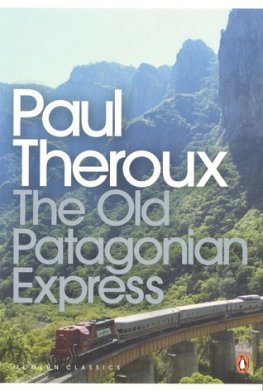To Shirley, who was my great supporter throughout the Orient-Express adventure.
Building a successful business such as Orient-Express Hotels is not achieved by a single person. It has been my good fortune to have been helped by many others along the way.
Colin Bather headed the leisure division of Sea Containers from its inception in 1976 when I bought the Hotel Cipriani in Venice. Colin convinced Dr. Natale Rusconi to take charge of the hotel in 1977 and for thirty years Rusconi set the standard of five-star luxury for the entire group. Simon Sherwood became chief executive of Orient-Express Hotels in 1994 and served until 2007 with me as chairman. The company came of age under his leadership.
Jean-Paul Foerster managed the European hotels 19902001 and Adrian Constant ably succeeded him. Dean Andrews looked after North America 19972007. Paul White managed the hotel business in the southern hemisphere before being promoted to chief financial officer in 2005, succeeding James Struthers in the CFO position. White became chief executive in 2007 when Simon Sherwood stepped down. He continued in that role until mid-2011. Maurizio Saccani has deftly overseen all eight Italian hotels since Natale Rusconi retired in 2007.
Nicholas Varian took over as vice-president for trains and cruises in 1989 and developed this division into six luxury tourist trains, a cruise ship and five canal cruise vessels.
The success of the Venice Simplon-Orient-Express owes a great deal to the Swiss hotelier Claude Ginella who has run it since its launch in 1982, assisted by the outstanding chef Christian Bodiguel. Raymond Blanc of Le Manoir aux Quat Saisons came into the group in 2002. He has made an enormous contribution to the world of French cuisine and the Manoir has held two Michelin stars since he opened it in 1984.
The food and beverage manager Vitorio DallO and the executive chef Attilio Di Fabrizio deserve special mention for creating one of the great dining experiences at the Villa San Michele near Florence, Italy. They often oversee the dinners served at my Capannelle wine estate in Tuscany.
The company has always depended upon its promotion to attract guests and Billy Hamilton, who died in office, was brilliant at it. He was followed by Nadia Stancioff and then Pippa Isbell who were both stars. Alison Booth was managing editor of Orient-Express Magazine under Shirleys leadership. It was published for twenty-four years and was an invaluable promotional tool. Vernon Stratton created many of the companys logos and brochures. He was an excellent photographer and one of his pictures is on the cover of this book.
David Williams has overseen sales and marketing while Roger Collins has skilfully managed the companys technical services. Ned Hetherington has served as general counsel both for the company and Sea Containers, keeping us all on the straight and narrow. Chresten Bjerrum, Sea Containers regional manager for the Far East, was key to acquiring and developing all eight Orient-Express Hotels properties in Southeast Asia.
The board was greatly strengthened by James Hurlock, managing partner of the White & Case law firm, J. R. (Bob) Lovejoy from Lazard Frres, John Campbell, our representative in Bermuda and Danny OSullivan who was chief financial officer of Sea Containers until his retirement in 2004. Georg Rafael of Rafael Hotels and Adrian Zecha, founder of Aman Hotels, both brought their vast hotelier experience to the board at various times. Prue Leith, the restaurateur and novelist , joined the board in 2006.
I encouraged the hotel general managers to treat their properties as their own businesses and many superb managers served the company in the years before my retirement as chairman in 2007. Id like to single out Philip Carruthers of the Copacabana Palace, Paul Stracey of Charleston Place, Nicholas Seewer of the Mount Nelson Hotel, Bryan McGuire of 21 Club, Filip Boyen, our regional manager in Peru and his successor Laurent Carrasset, Patrick Griffin of the Observatory, Tom Evers-Swindell of the Eastern & Oriental Express, Anton Kung of the Ritz in Madrid, Tony McHale of the Windsor Court and later Keswick Hall and Jacques Hamburger of the Htel de la Cit in Carcassonne. Glen Michaels did a fabulous job with PeruRail after its privatization, assisted by my old colleague from Sea Containers, Romulo Guidino, on the freight side.
Sea Containers would not have come into existence had it not been for the support of Maurice Pinto, my classmate from Yale, and his cousin Joseph Pinto. Michael Gellert of Burnham & Co. put in substantial capital when it was needed. Philip Schlee was also a founder investor and worked in the company for several years. Our great mutual friend, the hugely talented designer Gerard Gallet, provided decorative inspiration for our trains and hotels. Franco Delle Piane, the Sea Containers regional manager for the Mediterranean, gave us invaluable assistance with the m.v. Orient-Express cruise ship service and in the acquisition of several of the Italian hotels. More recently he arranged for my purchase in 1997 of the Capannelle wine estate in Tuscany and he oversees its operation.
Finding and selecting the 161 images which we have used in this book was no small task, and I particularly want to thank Orient-Express Hotels for giving us access to its extensive picture library, and to Alison Booth for guiding us through it. I have also drawn heavily on the excellent Shirley Sherwood picture archive, the result of many years of intrepid work by a first-class photographer. My thanks to Compagnie Internationale des Wagons-Lits in Paris for the posters used on the first two pages of the first picture section. Ian Lloyd travelled with us on the inaugural trip of the Eastern & Oriental Express and we have used a number of his photographs. Some of the early pictures come from the Sherwood family photo albums, lovingly compiled and maintained by my mother; I took the Far Eastern shots myself as a young officer in the U.S. Navy. Dr. Natale Rusconi gave us access to his own private collection compiled in his years of running the Hotel Cipriani in Venice. Bill McAlpine gave us the photograph of him with his beloved Flying Scotsman, and Maury Pinto also found a picture of his own handsome visage. Fritz von der Schulenburg gave us permission to use his picture of Harrys Bar in London. My thanks to Vernon Stratton and to everyone else who contributed to our picture sections. My thanks to Vivienne Schuster at Curtis Brown for taking on this project and to Jeremy Robson, the publisher, who produced the final result.
Last but not least, special thanks go to my collaborator Ivan Fallon, the journalist, biographer and newspaper executive, who skilfully researched and enlarged my original draft into this book and greatly assisted me at every stage of the publication process. He is a true professional.
James B. Sherwood
I bought my first train in October 1977. Or rather part of a train: two shabby pre-war first-class sleeping carriages without an engine. But they werent just any old carriages they were part of the fabled 1920s Orient-Express train, and had been used in the film of Agatha Christies Murder on the Orient Express. They were to launch me on an entirely new phase of my life that would not only see the resurrection and relaunch of the Orient-Express, which had first carried passengers across Europe in 1883, but the creation of the luxury hotel group I would develop over the next thirty years.














